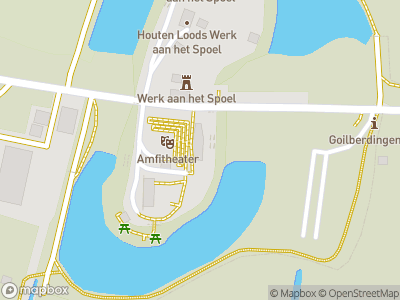The fort near Culemborg called Werk aan het Spoel was built in 1815 as part of the New Dutch Waterline. The fortifications comprised a number of structures that were responsible for protecting the intake sluice in the river Lek. This intake sluice was designed to flood a wide tract of land between the river Lek and the river Linge. An activity centre and restaurant, the Forthuis (Fort House), has been built here more recently for cultural and recreational use.
French armies
The original defences, Het Spoel, near Culemborg, had played a part in world history even before the New Dutch Waterline had been built. The invading French armies that arrived in the winter of 1794-1795 were confronted by a break in the dike wall, a coupure, that had been built in the dike to allow water to flood the land between the Lek and Linge rivers. The coupure was guarded by artillery which was surrounded by an earthwork rampart. The water to the west was held back by Diefdijk dike.This obstacle did delay the advance of the French troops, but was later dismantled by the French and the break in dike was sealed.
New Dutch Waterline
A new sluice was built in this location in 1815. Such a sluice in the waterline was a weak point which meant it needed additional defences. In this case, the Werk aan het Spoel fortifications were the result.Later in de 19th century, a number of bombproof buildings were constructed, followed in the 20th century by other fortifications such as bunkers, shelters, gun batteries and anti-tank barriers. There are also the remains of a shooting range just outside the fort on which the soldiers would have practiced.
Fort House
During WWII it became clear that the New Dutch Waterline was of little use in modern warfare and after the end of the war, the entire line was decommissioned. In recent years, people have started to recognise the historical value of the Waterline and some of the fortifications along the line have been converted for cultural or recreational uses. The Werk aan het Spoel fortifications for example, have recently been converted into the Forthuis (Fort House), an activity centre and restaurant. Similar initiatives can also be found at Fort Asperen and Fort Vuren.















